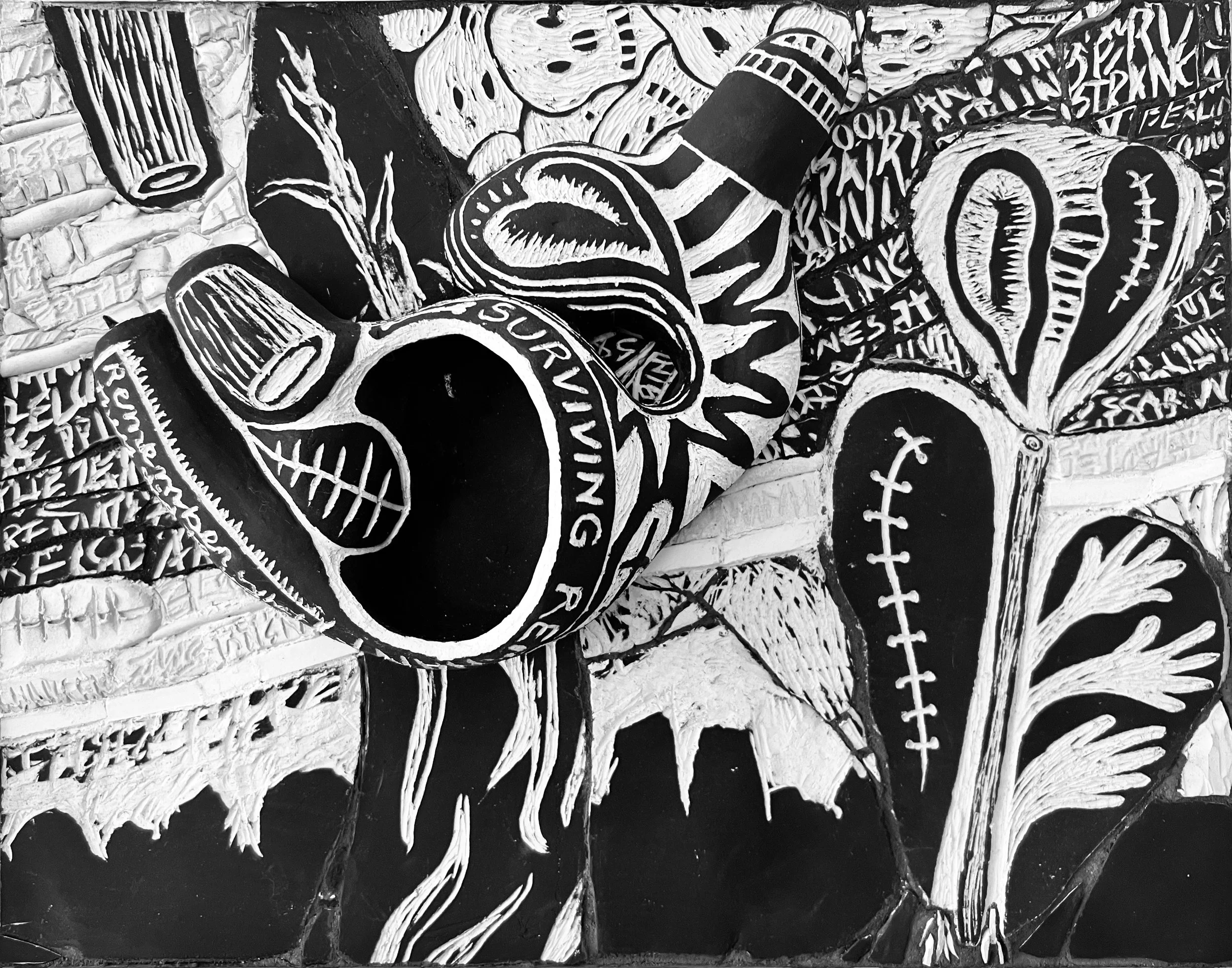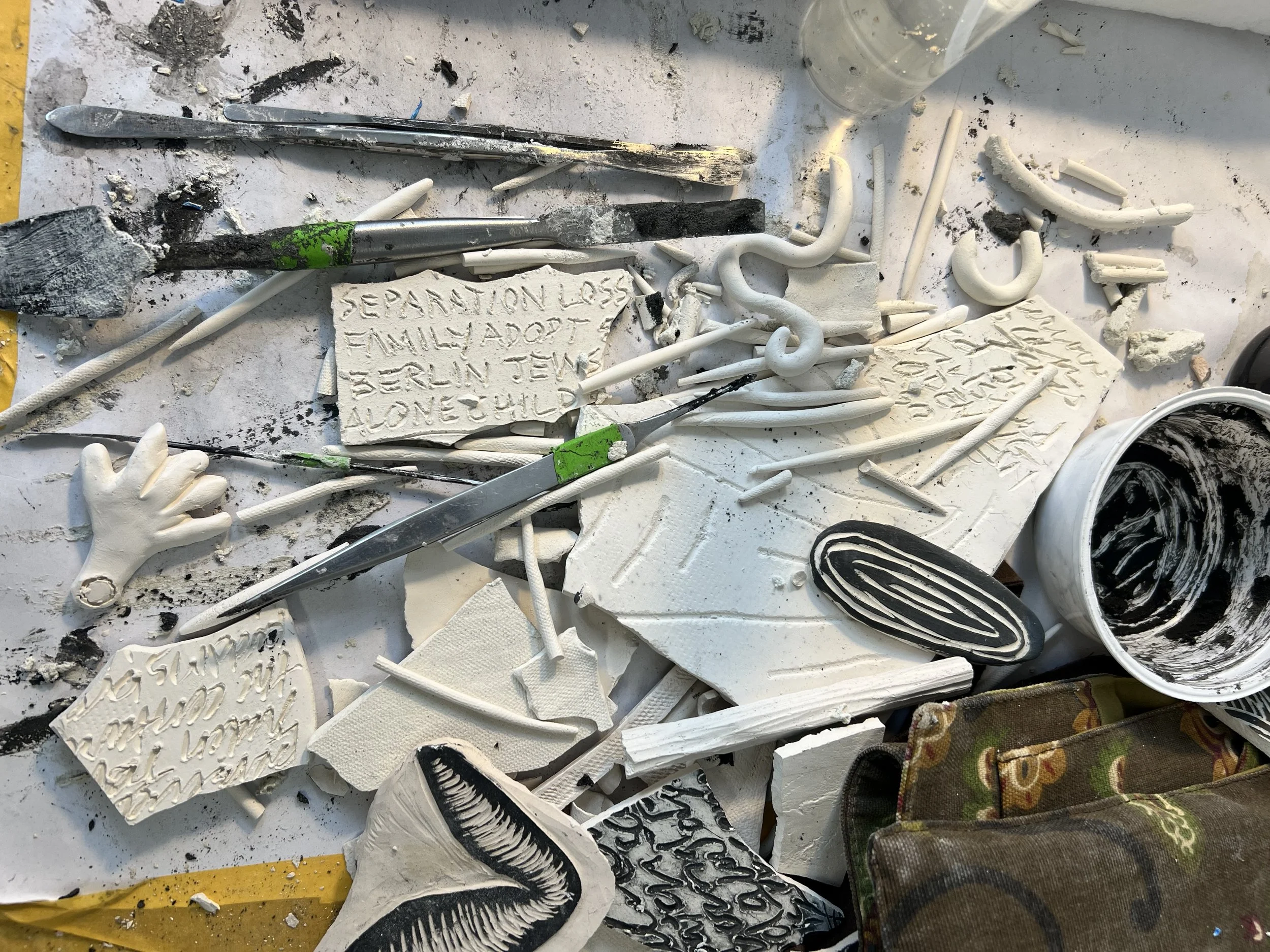Homo-Repairiens
The manifestation of inherited brokenness is embodied in visual art through process and outcomes. I position my knowledge of brokenness and subsequent repair as an adoptee and as the child of a holocaust survivor. Within my interdisciplinary art praxis, the state of brokenness prompts these responses; an assessment of the damage to facilitate a move towards repair and the acceptance of the damage and adaptations to support the creation of something transformed by trauma. Creative problem solving for renewal and survival is one response to post-generational trauma- inherited familial rupture and disconnection.
“Postmemory describes the relationship of the second generation to powerful, often traumatic experiences that preceded their births but that were nevertheless transmitted to them so deeply as to seem to constitute memories in their own right.” . (Marianne Hirsch, Generation of Post-Memory)
I see the world through the cracks of damage, where trauma is imprinted and evident, like kintsugi. I survive my traumas because I have adapted, seeing the world through the cracks of damage, where trauma is imprinted and evident, like kintsugi, an ideology envisioned as “ The metaphoric narrative of loss and recovery, breakage and restoration, tragedy and the ability to overcome it.”
This approach to damage, to envision adaptation after trauma, to transform and recover function from brokenness into beauty is comparable to mosaic for several reasons. In kintsugi, the breaks and cracks are a reference to nature, topography, trees, and rocks, the irregular and imperfect. These irregularities in breakage, the individuality of each specific trauma has a character to be embraced and considered. Every material may have similarities in the appearance of the specific break ( ie: slate breaks in flat strata, sandstone falls apart) yet ceramic breakage is unpredictable based on many different factors.
In my praxis there is a randomness in how a piece will break; I cannot predict or control my damage but I can choose to accept the transformation. Breakage can be accidental or intentional, both outcomes of trauma, both resolved by choice. In accidental breakage, one is forced to face ‘fragility and while also raising a sense of strength’ and options for recovery. After the shock of the disturbance, the emotion of the outcome of the damages has passed, it is then one can opt to accept the new state of being.
Change was forced upon my family through the unexpected disruption of war, displacement, and adoption with few resources for rebuilding the damaged remains. Kintsugi is accepts loss of control of the preservation of something valuable or precious, a coping mechanism for survival.
Identity is a fragmentary composite of experiences, memory, and relationships. An approach to visual language- a material investigation of gathering, collecting and chronicling the incidents and events, have given structure to my life. My identity is is distinguished by a disparate narrative; I am a descendent of a holocaust survivor adoptee, unwillingly surrendered for adoption, a single mother of three sons, an artist, and founder of an independent art school in America. Using a feminist and relational path to art-making that is tactile, integrative and improvisational, mosaic is an articulation of transformation through the consideration of separations, displacements, and reconsidered connections.
Through this autoethnographic practice, I focus on the recurring themes of transgenerational memory and feminist birth politics as narrative mechanisms to connect, transform and adapt - an intersection of the philosophies of Kintsugi and the Bricoleur. This practice is interdisciplinary, employing a synthesis of material knowledge to negate traditional characterizations of mosaics, ceramics, drawing and sculpture. How does mosaic aesthetic respond to a feminist discourse about maternal repair and connection?

